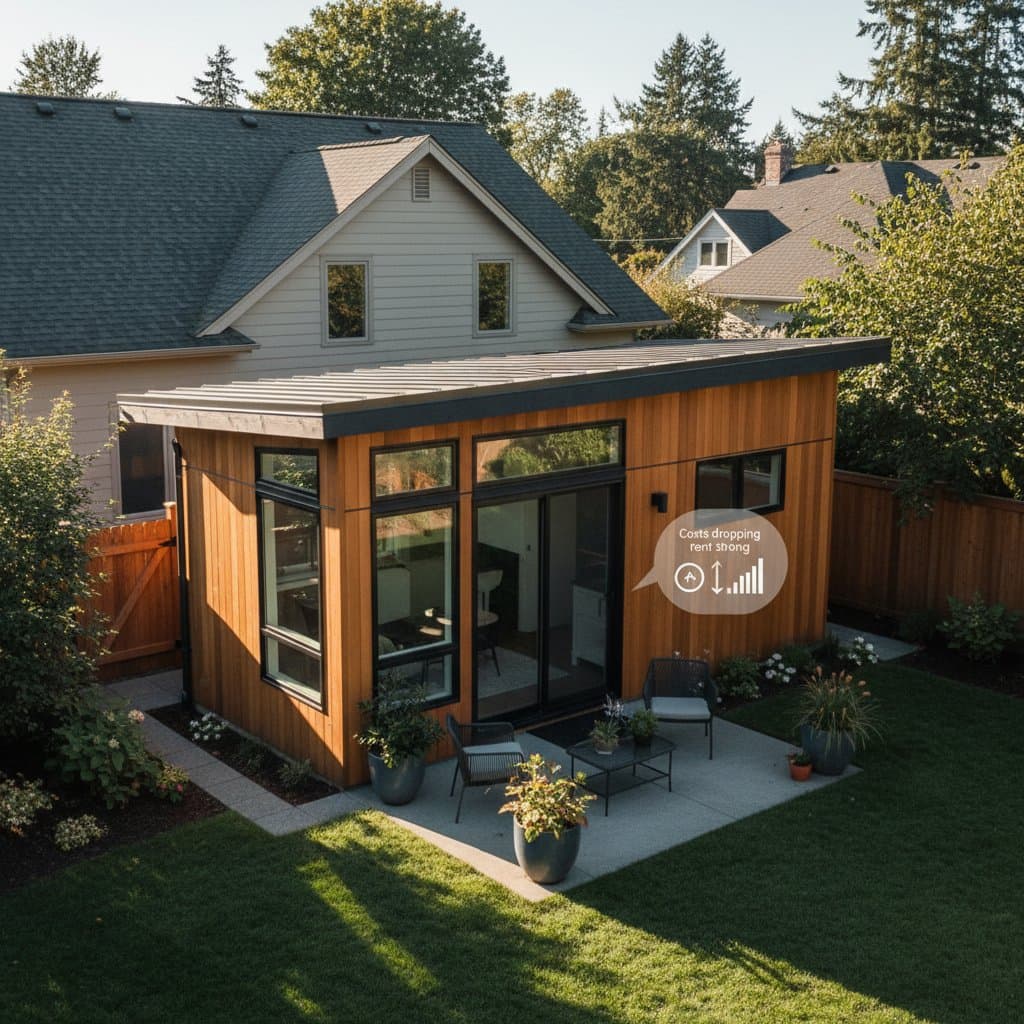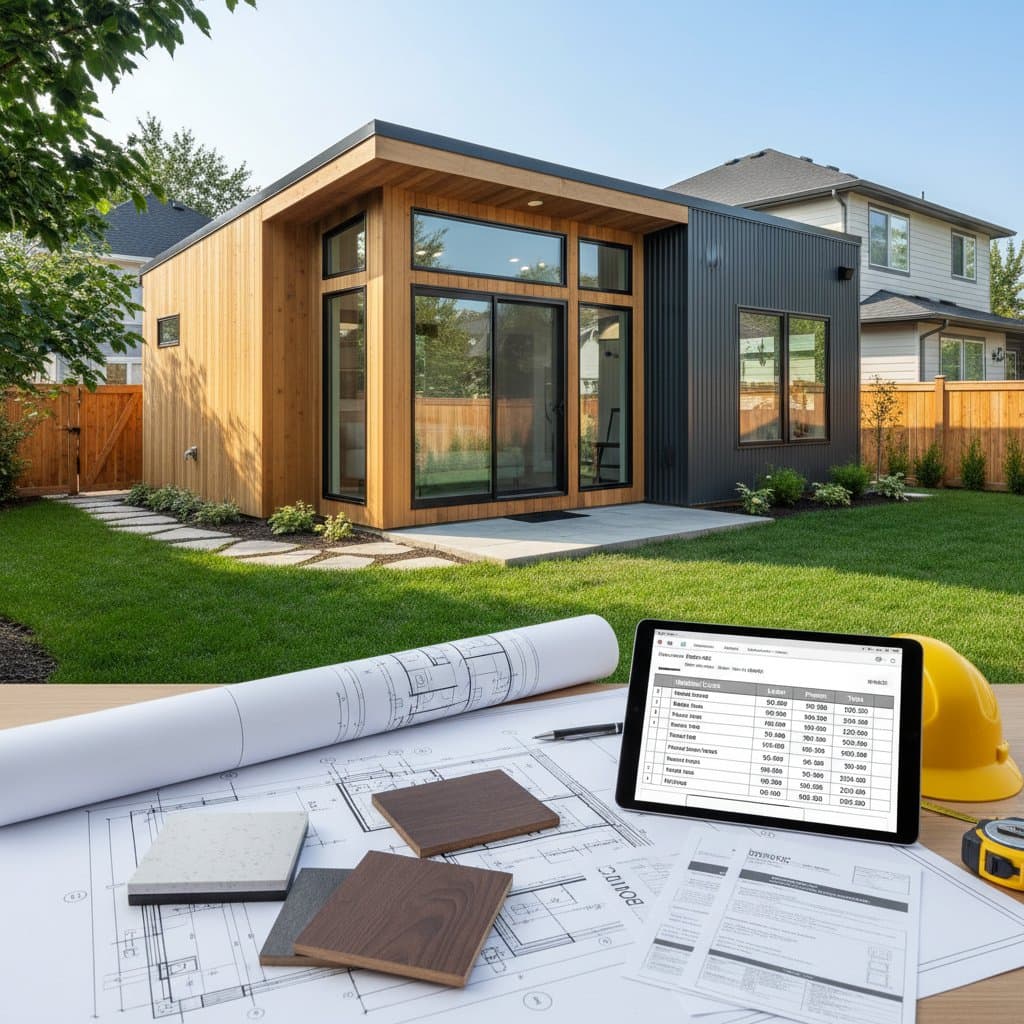2025 Costs for Multigenerational Home Renovations
One can expect to invest between $80,000 and $250,000 in a comprehensive multigenerational renovation. This range accounts for variations in project scale, such as constructing an accessory dwelling unit (ADU), repurposing existing areas, or adapting layouts for improved accessibility. For more modest endeavors, like transforming a basement into a suite or extending a primary living area, budgets typically fall between $45,000 and $120,000.
These investments enable families to accommodate multiple generations under one roof, fostering closer bonds while preserving individual privacy. Professional estimates suggest that well-executed projects can yield a return on investment through enhanced property appeal and potential rental income from added units.
The Importance of Multigenerational Renovations
An increasing number of households now include grandparents, parents, and children living together. This arrangement allows families to pool financial resources, provide mutual support, and navigate life transitions more effectively. Renovations tailored to these dynamics enhance daily comfort by incorporating features like wide doorways for wheelchair access or private entrances to reduce intergenerational friction.
Beyond immediate benefits, such modifications promote long-term adaptability. For instance, installing grab bars in bathrooms today prepares the home for future mobility needs without requiring extensive retrofits later. Moreover, strategic upgrades often boost home equity; real estate data indicates that properties with dedicated in-law suites command premiums of 10 to 20 percent in desirable markets.
Evaluating Popular Renovation Approaches
Selecting the right renovation method depends on available space, budget constraints, and family priorities. Each option presents unique advantages and challenges, influencing both cost and functionality. Below, three prevalent strategies receive detailed examination.
Constructing an ADU or In-Law Suite
This approach involves building a separate living space, often detached or attached to the main structure. Families gain substantial independence, with each generation enjoying its own kitchen, bedroom, and bathroom. Resale value increases significantly, as buyers seek turnkey multigenerational homes; in urban areas, an ADU might add $100,000 or more to market price.
However, initial expenses prove highest, frequently exceeding $150,000 due to foundation work and utility extensions. Permitting processes demand thorough documentation, including site plans and environmental impact assessments. In some regions, design reviews by local boards ensure aesthetic harmony with neighborhood standards.
Repurposing a Basement or Garage
Leveraging underutilized spaces like basements or garages minimizes the need for new construction. Projects proceed swiftly, often completing in under four months, and preserve outdoor areas for gardens or play spaces. Costs remain lower, around $60,000 to $100,000, since the existing footprint requires no additional land excavation.
Challenges include addressing natural limitations, such as low ceilings in garages or dampness in basements. Building codes mandate egress windows for safety, which can add $5,000 to $10,000 per installation. Soundproofing becomes essential to maintain privacy; without it, noise from upstairs activities may disrupt downstairs living.
Adjusting the Interior Layout
Reconfiguring rooms within the existing home offers a seamless integration with the original design. This method disrupts daily life least, as work confines to indoors, and proves most economical at $50,000 to $80,000 for basic alterations. Visual continuity enhances the home's cohesive feel, appealing to future buyers.
Drawbacks involve potential reductions in communal areas, like converting a dining room into a bedroom. Structural modifications, such as relocating load-bearing walls, necessitate engineering consultations that inflate budgets by 15 to 25 percent. Achieving genuine separation requires thoughtful placement of doors and hallways to delineate private zones.
Project Timeline and Phased Execution
Multigenerational renovations unfold in distinct phases to manage complexity and minimize disruptions. Understanding this sequence helps families prepare for temporary relocations or phased occupancy.
-
Planning and Design Phase: Allocate 4 to 8 weeks for architectural drawings, zoning verifications, and detailed budgeting. Engage a designer early to sketch floor plans that align with family workflows, such as proximity of caregiver spaces to primary bedrooms.
-
Permitting Phase: This step spans 2 to 6 weeks, varying by local authority. Submit applications for building, electrical, and plumbing permits; delays often arise from incomplete zoning compliance checks.
-
Demolition and Framing Phase: Expect 2 to 4 weeks for removing partitions and erecting new frameworks. Crews focus on reinforcing structures to support added loads from kitchens or bathrooms.
-
Rough Utilities Phase: Over 2 to 3 weeks, install plumbing, electrical wiring, and HVAC systems. Prioritize energy-efficient setups, like LED lighting and low-flow fixtures, to qualify for rebates.
-
Finishing Phase: Dedicate 4 to 6 weeks to insulation, drywall installation, painting, and flooring. Select durable, low-maintenance materials that withstand high-traffic family use.
-
Inspection and Completion Phase: Finalize with 1 to 2 weeks for code inspections, landscaping touch-ups, and thorough cleaning. Obtain certificates of occupancy to ensure legal habitability.
Overall, projects span 3 to 9 months, with larger ADU builds leaning toward the longer end. Seasonal factors, like rainy winters, may extend outdoor-dependent tasks.
Essential Materials and Tools
Choosing quality materials ensures durability and accessibility in multigenerational settings. Focus on items that support aging in place, such as slip-resistant surfaces and ergonomic fixtures.
Key Materials:
- Framing lumber or steel studs for sturdy partitions
- Moisture-resistant drywall to combat humidity in conversion spaces
- Vinyl plank or porcelain tile flooring for easy cleaning and mobility
- Low-threshold or curbless shower bases for barrier-free access
- High-performance insulation and acoustic panels for thermal and noise control
- Double-pane, energy-efficient windows and doors to improve natural light and efficiency
Recommended Tools:
- Circular saw, cordless drill, and precision level for accurate cuts and installations
- Stud finder and digital moisture meter to locate framing and detect leaks
- Comprehensive safety equipment, including gloves, safety goggles, and dust masks
- Utility knife and drywall taping tools for finishing edges
For specialized tasks, rent equipment like scaffold lifts for high ceilings or wet tile saws for custom cuts. Local hardware stores often provide guidance on tool selection.
Adapting to Regional and Environmental Factors
Local conditions shape renovation decisions, from material choices to regulatory hurdles. Tailoring projects to these elements prevents costly revisions and enhances sustainability.
In cold climates, incorporate R-19 wall insulation and radiant heated flooring to maintain warmth without excessive energy use. Hot regions benefit from solar-reflective roofing, extensive shading via awnings, and whole-home ceiling fans to reduce cooling demands.
Coastal properties require galvanized hardware and vapor barriers to resist salt corrosion and flooding. Urban settings impose strict rules on setbacks, lot coverage, and off-street parking for ADUs; consult city planners to navigate these early.
Regardless of location, consult municipal building codes rigorously. Regulations for secondary dwellings evolve, with some areas offering streamlined approvals for family caregivers.
Frequently Asked Questions
What increase in property value does an ADU typically provide?
An ADU generally adds 20 to 30 percent to home value, contingent on market location and execution quality. High-end finishes and smart home integrations amplify this gain.
Do shared kitchen facilities allow two families to qualify as separate living units?
Most jurisdictions require distinct kitchens for independent status. Shared setups may limit rental options and complicate zoning approvals.
Steps to Launch Your Renovation
Initiate the process by mapping family needs against available space. Outline requirements for privacy, such as soundproofed walls between suites, and accessibility, like lever-handled doors throughout. Identify shared areas, including multipurpose kitchens that accommodate varied cooking styles.
Secure consultations from licensed architects and contractors to refine concepts. Request at least three detailed bids, verifying inclusion of permits, utility upgrades, and complete finishes. Track progress with weekly site meetings to align outcomes with expectations.
Ultimately, these renovations create resilient homes that evolve with family stages, delivering comfort and security for years ahead.



